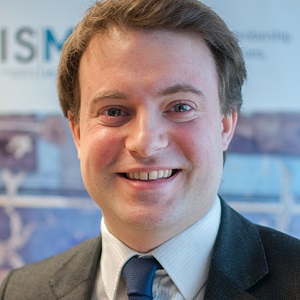A higher proportion of pupils are being entered for at least one arts subject at state schools than at private schools, but the overall decline in popularity of arts subjects isn’t letting up, according to new research from the Education Policy Institute.
On average, state secondary schools entered 51.3 per cent of pupils for at least one arts subject at key stage 4 in 2016, while private schools entered 47.6 per cent.
This is despite new accountability measures for state schools that favour academic subjects, like the EBacc, and funding cuts that have seen some state schools cut back on their creative offer.
Pupils at independent schools take part in a great number of artistic activities outside of the public exam system
The figures represent a decline in entries into arts subjects among private school pupils since 2012, when the proportion entered for at least one arts subject peaked at 53.8 per cent.
In state schools, entries in creative subjects hit a high of 53.7 per cent in 2013, but have declined sharply since then, reaching their lowest level of the decade in 2016.
Barnaby Lenon, who chairs the Independent Schools Council, said private school pupils take part in a “great number of artistic activities outside of the public exam system”.
“When you consider that most independent school pupils take a modern foreign language at GCSE and many do classics, [and] that most take three separate sciences alongside English language, English literature and maths – plus at least one humanities subject – that leaves little room,” he said.
“Given so many pupils are already learning about the arts through extra-curricular activities, some may choose not to study these subjects in the classroom too.”
Accountability measures to blame?
According to the EPI, provisional data for 2017 shows a continuing decline in the number of children enrolling into arts GCSEs.
This is said to be partly down to new accountability measures for schools, like the EBacc and progress 8 which encourage schools to emphasise a set of GCSEs which do not include the arts.
When the Progress 8 measure for schools was implemented in 2016, we saw an increase of more than 10 percentage points in the proportion of pupils entered for four of the EBacc subjects (English, maths, science, languages, computing science, history and geography).

However, Progress 8 includes an “element of protection” for arts subjects because, of the eight subjects which count towards it, three can be creative subjects.
The report also claims that “wider financial issues” are putting pressure on arts entries, though this varies between school leaders.
“Our analysis shows that entries to arts subjects are currently declining, following several years of slight increases,” said Becky Johnes, the EPI’s senior researcher.
“This recent drop in arts entries is driven by several factors, including changes to the way school performance is measured, financial pressures on schools, and, of course, local decisions taken by school leaders.”
The report has provoked a fresh round of calls for the government to review the EBacc.
Henry Vann, the head of external affairs at the Incorporated Society of Musicians, who coordinates the Bacc for the Future campaign, said the report was “timely, independent, rigorous and important” and should be “read carefully” by ministers.
“The government must now meet with arts campaigners, industry and unions who are united in calling on them to reconsider the EBacc in its current form,” he said.
Gaps between boys and girls, north and south
The EPI’s research also found:
- A north-south divide: 57.3 per cent of pupils in the south-west of England entered at least one arts subject, compared with 47.8 per cent in the north-east.
- A massive gender gap: 64.7 per cent of girls took at least one arts subject, compared with 42.5 per cent of boys.
- An ethnicity gap: Arts have a high entry rate among black Caribbean pupils but they’re lower for pupils from Indian and Pakistsani backgrounds.
- Free school meals: Such pupils are more likely to take an arts subject than their peers
- Children with SEND: These are also more likely to take at least one creative subject, which was not the case at the beginning of the decade.



“When you consider that most independent school pupils take a modern foreign language at GCSE…’ Let’s also consider how many of these independent schools are selective. The ISC is silent on this. Its 2017 census said 50% of ISC schools were non-selective but that figure included junior schools which don’t, of course, enter pupils for GCSE.
Comparing the results of schools which are likely to be highly selective with schools which educate the full ability range is disingenuous.
Who’s comparing any results in this article?
Not once does it compare or even refer to results for independent schools, state schools or otherwise. All it does is talk about how many pupils are entered for arts subjects.